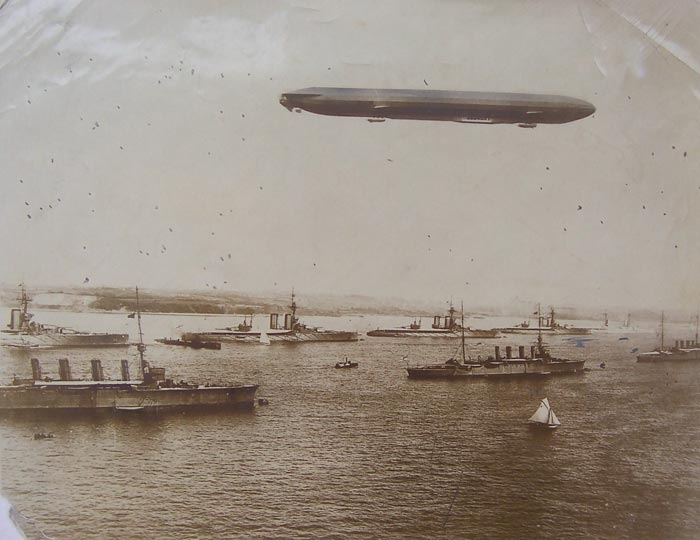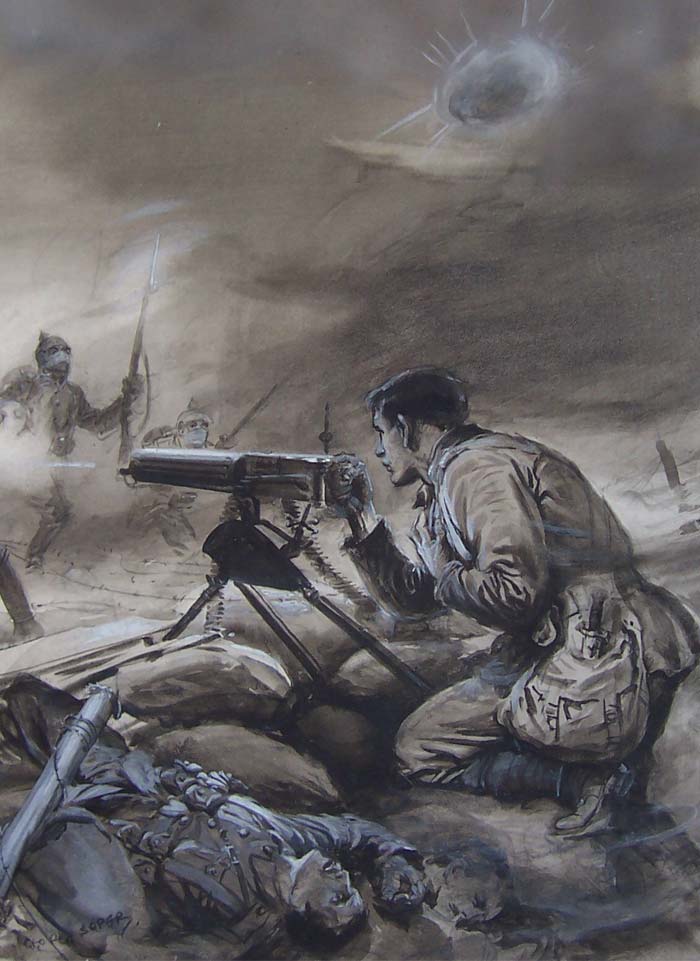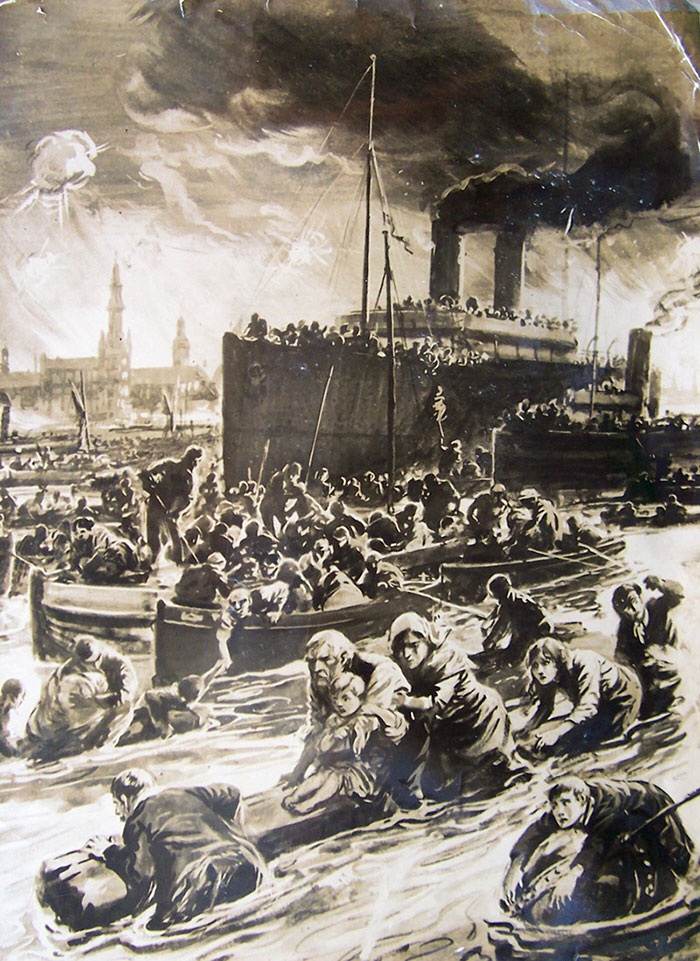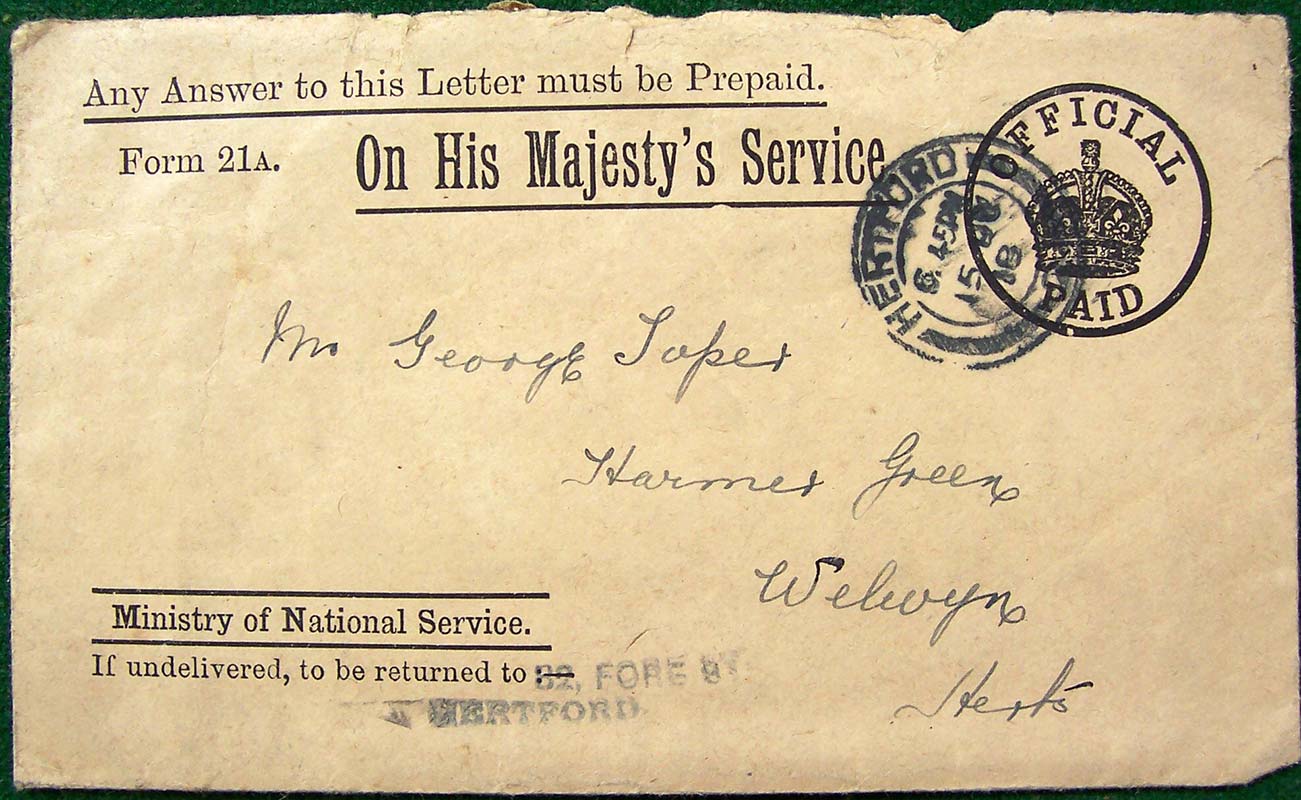Please donate to The Soper Collection
Further donations will be used to expand and enhance the facilities at the Pannett Art Gallery.

From the Nation’s point of view George made a great contribution to the war effort. His role as an artist allowed him to be the vehicle by which the public saw what was happening wherever war was taking place.
In his book ‘Wildings’ published in 1991 (see page 24) Duff Hart-Davis wrote as follows:
“George volunteered for military service at the age of 44, but was rejected on the grounds that he had a weak heart (in July 1918 an army medical board found him to be ‘permanently and totally unfit for any form of Military Service’, and discharged him from any liability to be called up). His contribution to the war effort was pictorial: working fast, and often late into the night, he illustrated partworks describing particular battles and the conflict in general, and hurried to London by train in the morning, taking his finished pictures with him.”
A basket was found in Wildings of over 400 photographs, with captions, capturing incidents of The Great War.
There were 25 Press Agencies involved and the 37 countries represented are listed below: France; Italy; Australia; New Zealand; Russia; Canada; America; Belgium; India; China; Japan; England; Poland; Bulgaria; Egypt; Denmark; Greece; Serbia; Albania; Switzerland; Algeria; Montenegro; Africa; Palestine; Afghanistan; Roumania; Silesia; Germany; Austria; Hungary; Turkey; Sumatra; Scotland; Wales; Holland; Mexico; South Africa;
This cache of photographs is now part of the Memorabilia entrusted to The Soper Collection.
The photographs are not dated but each has a caption.





The Captains of the Belgian State Railway steamers, Princess Henriette and Leopold II, arrived at Antwerp at 9 o’clock on Friday morning. The flight from the city was at its highest. Rowing boats, tugs, lighters, and steamers were mixed up in great confusion, all crammed with people, and floating in the river were numerous heavy logs on which whole families were carried by the current. Others were sitting on buoys in the water. Shells at the rate of 100 a minute were falling in the river and the city was burning in many parts. For three hours the two ships cruised about rescuing people from the logs and buoys and taking parties off the small boats.
Many of the women and children were hysterical, and great difficulty was experienced in getting them on board. At the end of three hours there were nearly two thousand people in each steamer. At Flushing the Dutch men of war were asked to give sustenance, and all night long sailors bought buckets of water and fifteen tons of biscuits, which were eaten ravenously



Further donations will be used to expand and enhance the facilities at the Pannett Art Gallery.
By continuing to use the site, you agree to the use of cookies. more information
The cookie settings on this website are set to "allow cookies" to give you the best browsing experience possible. If you continue to use this website without changing your cookie settings or you click "Accept" below then you are consenting to this.